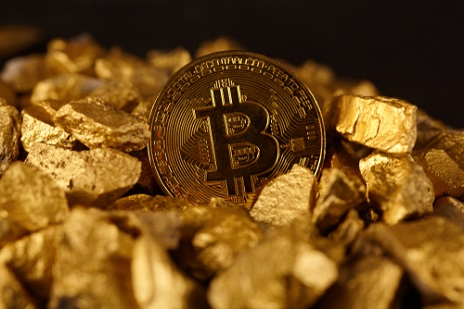Gold Mining Rights Have Now Been Tokenized and Recorded on the Blockchain
- Tokenized Commodities Council

- Mar 5, 2023
- 2 min read
Updated: Mar 31, 2023
Originally posted by Kitco on March 06, 2023.

While Bitcoin (BTC) is often cast in a competitive light when it comes to discussing gold, the blockchain technology that underpins the top crypto has a wide range of potential use cases that can help improve the efficiency of how all financial markets operate, including precious metals markets.
A prime example of how the technology can be applied to the precious metals space is demonstrated in the recent announcement from Santo Mining Corp. The company has entered into a non-fungible token (NFT) software development agreement with Vegachi Holdings SAS to develop a series of NFTs linked to the fractionalization of land with gold mining rights.
The fractionalization of land in regard to gold mining rights is a novel approach to applying NFT technology for investing in the gold industry, but the method has been applied previously to other forms of real estate that offer multiple investors the opportunity to invest.
"We are delighted to work on this project and be able to bridge LawTech & FinTech with digital assets, and ensure that the traditional legal world can be linked and embedded with the blockchain and digital asset technology,” said Hassan Mustafa lead Attorney at Law at Mustafa & Associates and Legal Representative of Vegachi Holdings SAS.
Santo Mining, which is doing business as Santo Blockchain Labs (OTC PINK:SANP), is a vertically integrated blockchain and crypto company that manages, operates, and develops end-to-end Blockchain-as-a-Service (BAAS), which helps businesses get blockchain applications up and running.
Vegachi Holdings has 345.94 acres of land located in Vegachí, Antioquia, Colombia, with gold mining rights issued by the Government of Antioquia. Lidar drone scans and topsoil geological tests have shown that the site registered 18 grams of gold per metric tonne. Under the new agreement, Santo will receive a 3% transaction fee for the sale of each NFT, including a 1.5% royalty fee for every future transaction of the minted NFTs. Selling the land rights via NFTs helps to create a more efficient system of tracking and managing sales, and benefits from the fact that the details of the transaction are permanently recorded on the blockchain.
"This is a great opportunity to showcase our vast NFT development experience, be able to incorporate all the legal documentations and titles of the land inside an NFT that will constantly morph as the historical and future value of the land and dead holders change,” said Frank Yglesias, CEO of Santo. “Additionally, the transaction fee structure will insure reoccurring revenue for the Company."









Comments